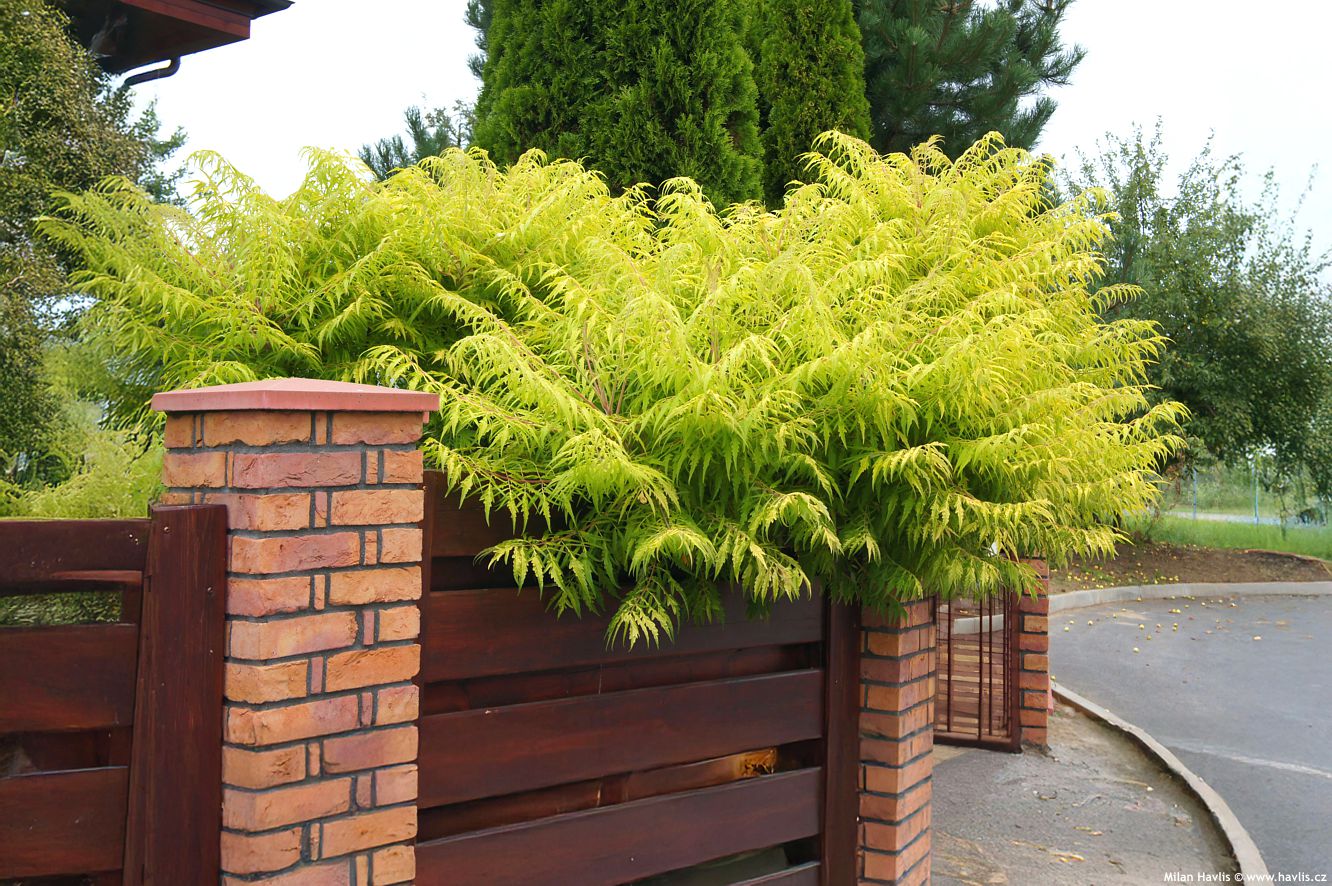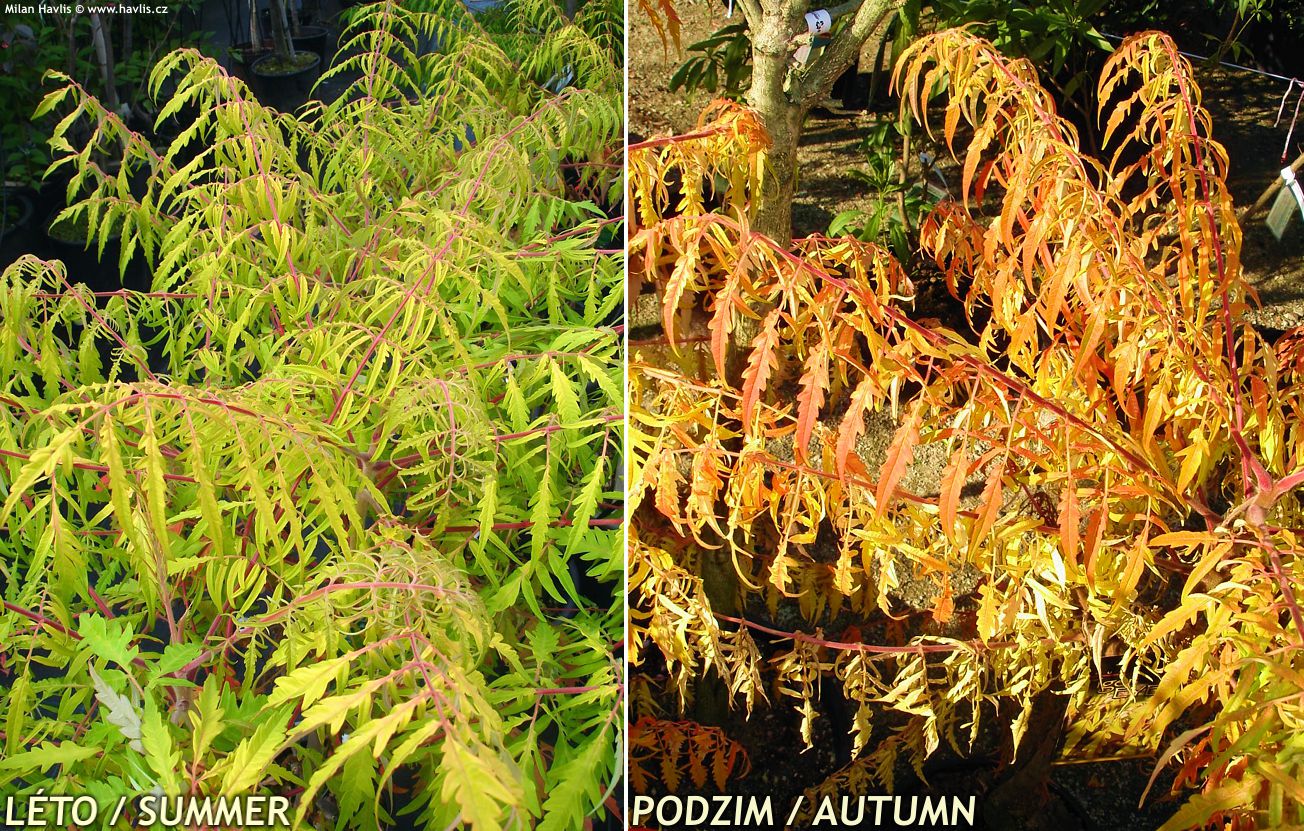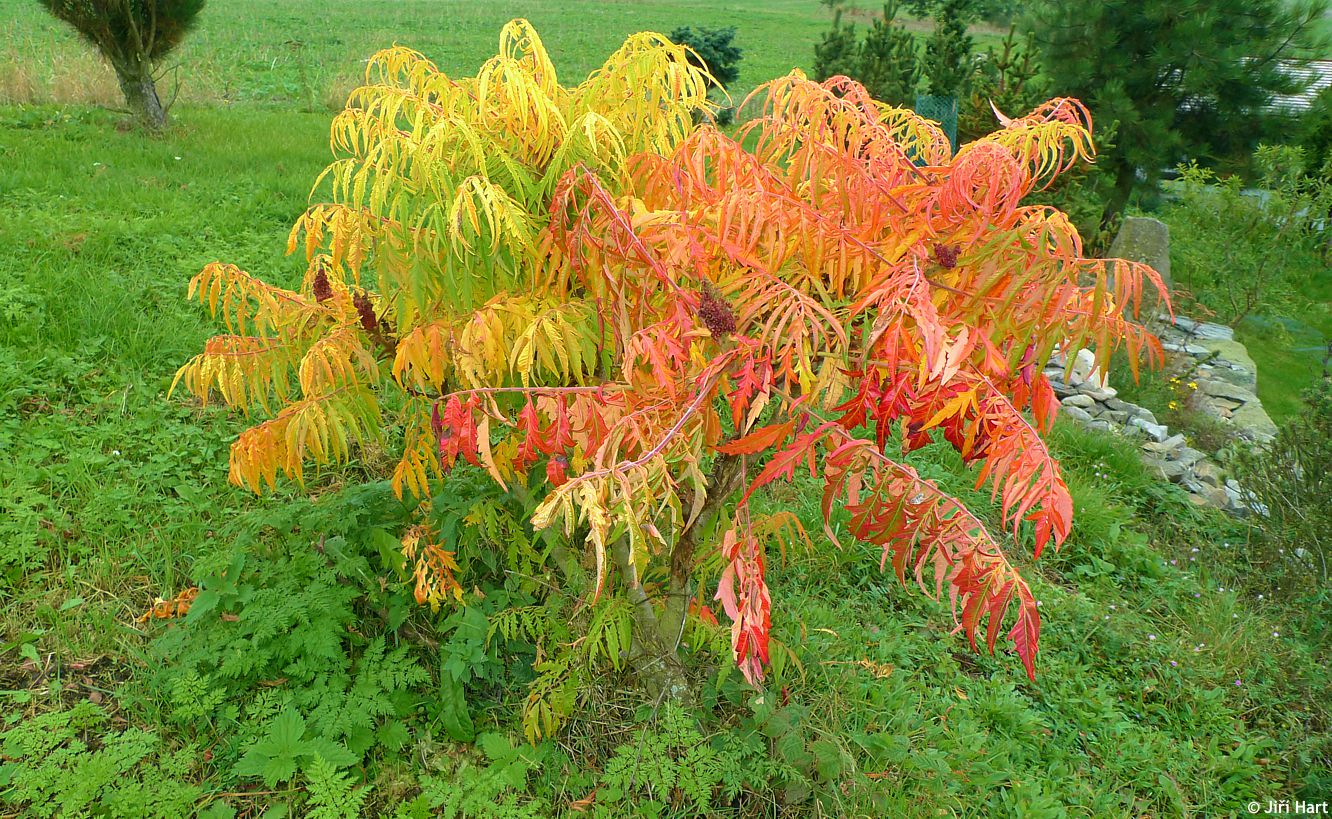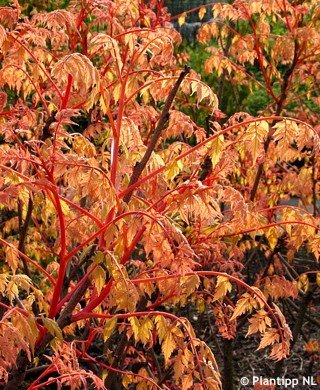Rhus typhina ('Bailtiger') TIGER EYES® sumac
From Bailey Nurseries, USA, which also gave birth to hardy hydrangea Endless Summer®, comes a new plant, a special variety of sumac. Within a short time it has become a popular novelty among growers and gardeners around the world.
Tiger Eyes® is a cut-leaf form of sumac. Its pinnate, fern-like leaves bear many, finely cut individual leaflets. They are bright green when they emerge, quickly turning to lime-green and yellow. The best show begins in September/October when they change to pinky-red and golden. The leaves are arranged along deep pink stalks which are about 30 cm long and, since the plant is deciduous, fall off later than the leaves so amateur gardeners sometimes think that the plant loses its new, fragile branches. The colour of the stalks beautifully contrasts with fresh yellow-green foliage.
This sumac is a slow growing shrub forming a somewhat flat crown. It has a rather compact habit and even in full maturity seldom exceeds 2m wide and tall. Thanks to its vibrant colours and unusual architecture it is a favourite plant used for specimen planting or in combination with other, lower growing shrubs with different, preferably smaller foliage.
This plant was a selection found in a nursery in St.Paul, Minnesota, USA, in 1985. It was discovered growing among Laciniata varieties. Its colour and habit was so distinct that the nurseryman decided to preserve this unique plant and observed it for a few years to make sure it stays the same. It showed constant colouring and grew more slowly and compact compared to Laciniata. In 2004 the plant was patented in the USA under plant patent No. PP16,185. It means that it may not be reproduced for commercial purposes. The patent includes the complete characteristics of the invention, along with a sentence which – I must say I could not resist – brought a big smile on my face as it sounds as if taken from the speech made when the first man landed on the Moon:
Quote
“Had this single plant of the new cultivar not been discovered and preserved it would have been lost to mankind.“
Unquote
Sumac prefers semi-fertile, moist but well-drained soil but is very soil tolerant. When established it withstands both drought and temporary flooding, soil pH is not an issue. It does best in full sun where its leaves get the best shades. It can be pruned in early spring but we do not recommend it as well as digging around its roots as it may feel endangered and want to reproduce itself and spread by suckers. Fully hardy to min. -34°C (USDA zone 4).
Last update 28-10-2008.
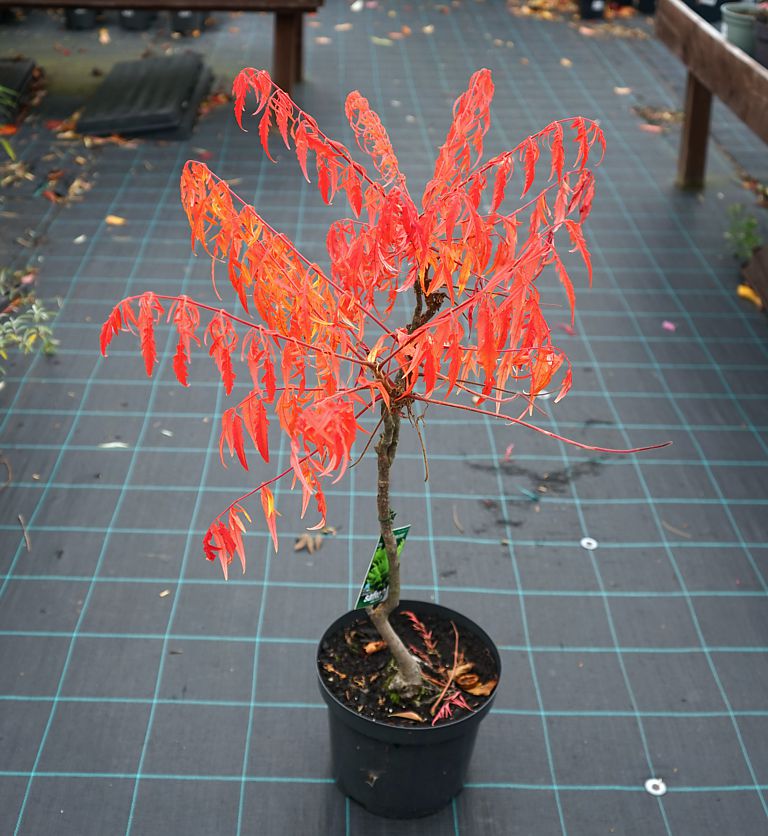
671,5 Kč

12 070 Kč
Goods are shipped all over Europe. For Russia and U.K. and for further details please read about SHIPPING OPTIONS HERE.
Are you interested in a serious discount for orders NOV-FEB? Check your options here.
THE PRICES INCLUDE VAT of 15%. For quick conversion you can use 1 CZK = approx. 0.04 EUR
- STANDARD QUALITY - Plants of this group are 1st class quality with number of branches and overall density adequate to their size and age, considering they were container grown.
- DE LUXE QUALITY - This label guarantees a luxurious quality of manually selected plants that, compared to their height and age, are exceptionally dense and beautiful.
- EXTRA - These plants are usually mature and bigger specimens with exceptional overall appearance.
- STANDARD (as described in the plant form) means a tree with a trunk of 190-210 cm and a crown at the top, unless specified differently. The commercial size for trees is their girth measured in the height of 1m from ground.
- HOBBY - These plants are of the same quality as our standard-quality plants but younger and therefore cheaper.
- SHRUB - a woody plant with branches growing bushy from the ground level.
- HALF-STANDARD or MINI-STANDARD - a small tree with shorter trunk, its size is usually specified.
- FEATHERED - These are trees with branches growing already from the base of the trunk and up along the stem.
- GRASSES and PERENNIALS - Sizes given usually read the diameter of the pot or the clump, as specified.


































